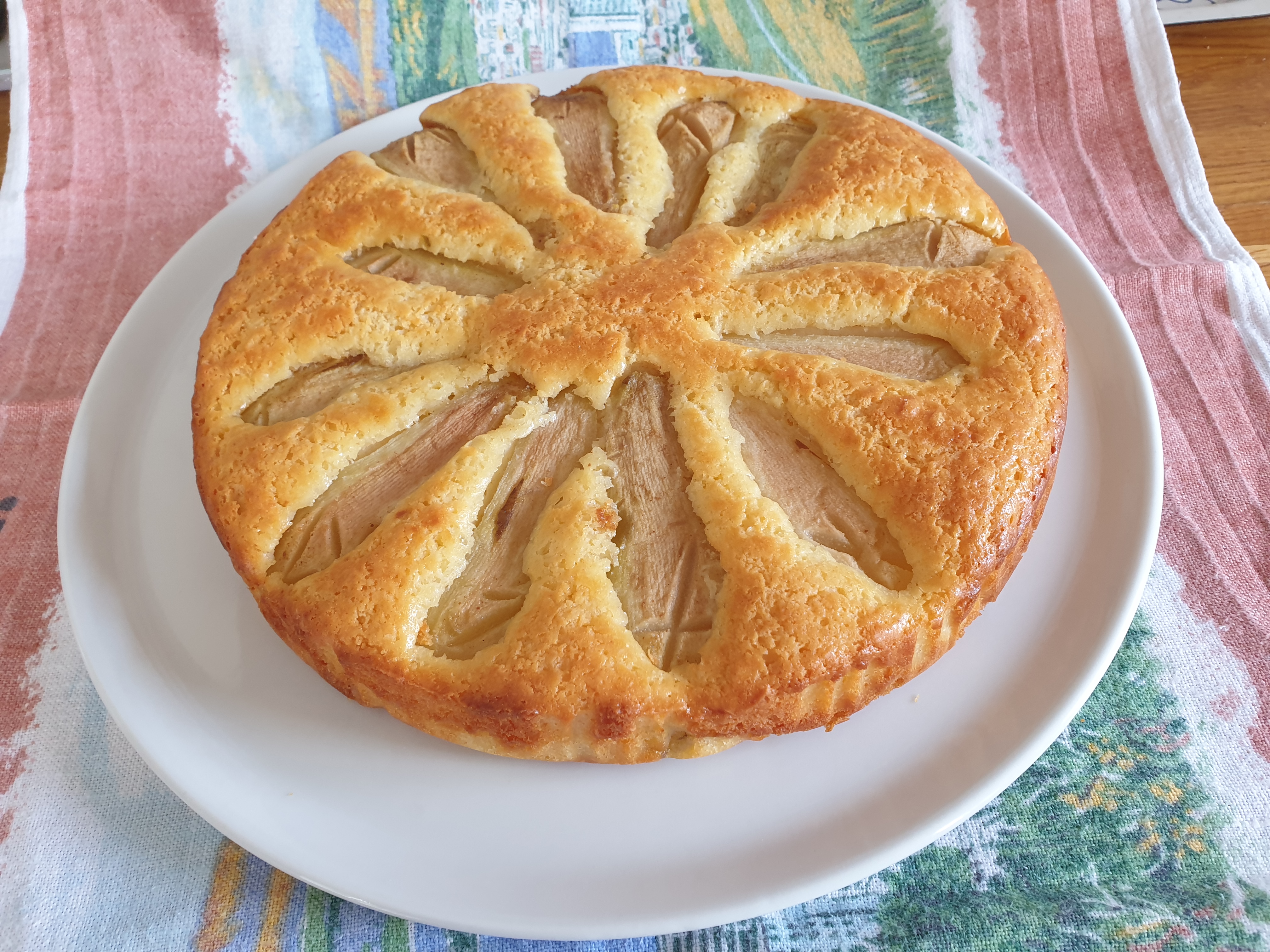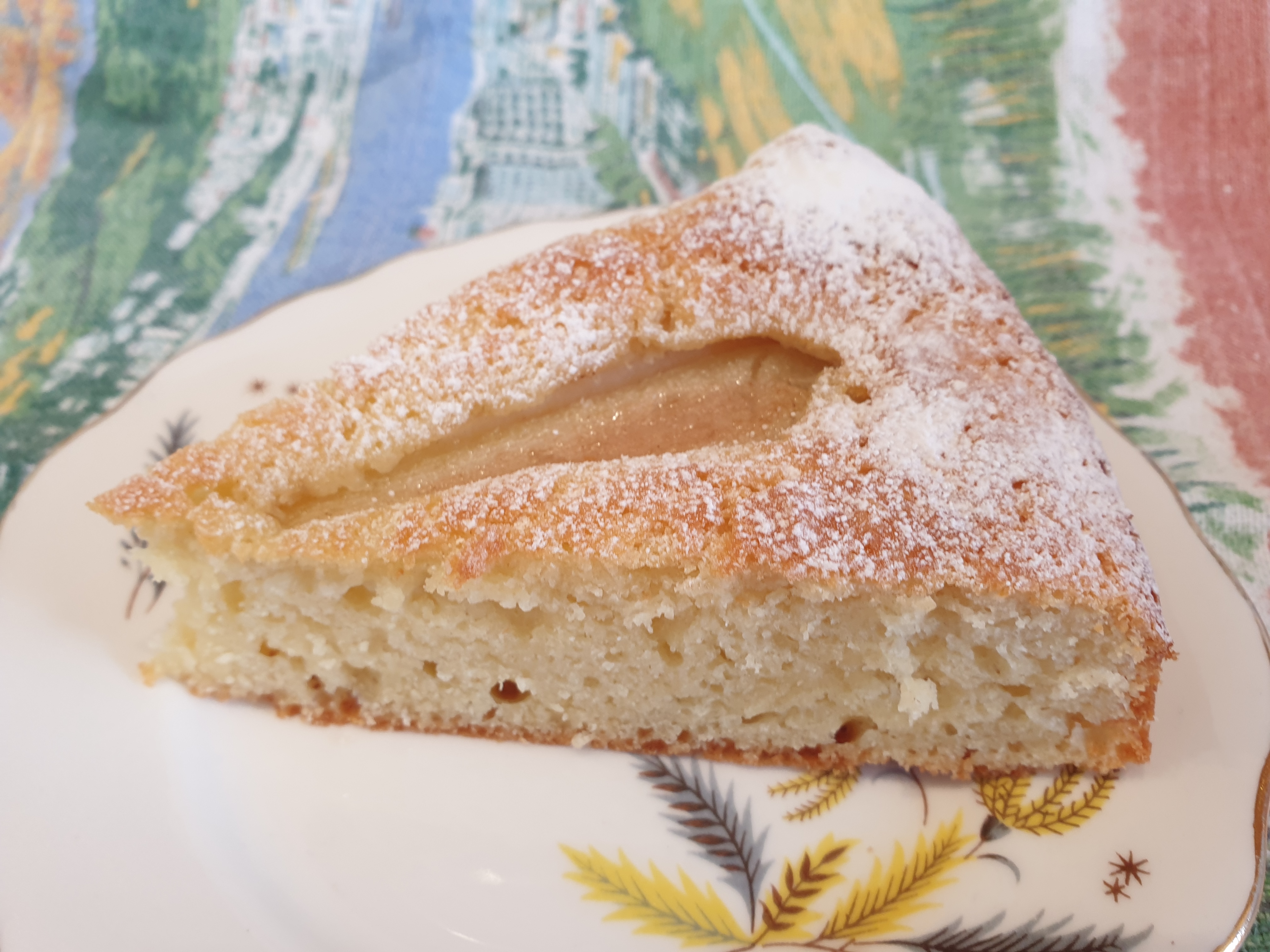- Having made an apple cake – in a different way with eating apples – I thought this recipe would work well with pears.
INGREDIENTS
- 100g of butter – softened.
- 95g of granulated sugar
- ½ teaspoon of vanilla essence
- 4 tablespoons of soured cream
- 100g of cream cheese (or yoghurt cheese)
- 3 eggs
- *
- 150g plain flour
- 50g potato flour
- 2 teaspoons of baking powder
- ¼ teaspoon of salt
- *
- Butter to grease the tin
- *
- 3 large fairy ripe pears – such as Conference or 6 small ones
- ½ tablespoon of granulated sugar and ¼ teaspoon of ground ginger (or cinnamon)
METHOD
- Brush a 26cm in diameter loose bottomed tin with the melted butter.
- Pre-heat the oven to GM4 – 180°C.
- Cream the butter with the 95g of sugar.
- Add the cream cheese, soured cream and eggs and whisk well together.
- Mix the plain flour, potato flour, salt and baking powder together.
- Add the flour mixture gently to the other ingredients and mix well together.
- Leave in the bowl whilst you prepare the pears.
- *
- Mix the ½ tablespoon of sugar with the ground ginger.
- Peel and core the pears and cut then in quarters (or halves if small pears)
- Criss-cross the domed end of the pears with a sharp knife.
- Put them into the sugar mixture.
- *
- Put the cake batter into the tin and smooth flat.
- Put the pear quarters (or halves) around the top of the batter.
- Bake for 45-50 minutes.
- Leave to cool in the tin.
Dust with icing sugar before serving.



































